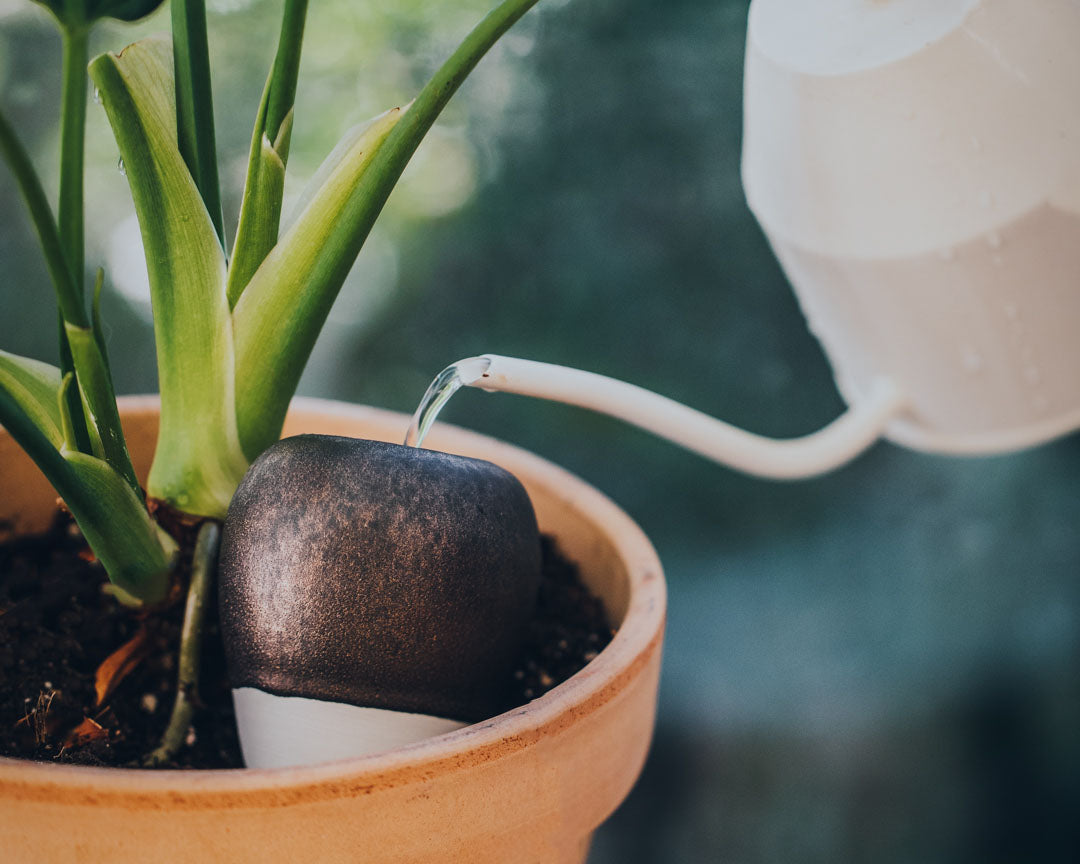When it comes to taking care of indoor plants, watering is arguably one of the most important tasks. However, it's easy to make mistakes that can kill your plants. So here are some common mistakes to avoid when watering your plants!
Watering too frequently
If you water your plants too often, it can lead to various problems that can affect their health and growth.
Too much water can cause root rot and promote the growth of bacteria and fungi, while a lack of water can weaken plants and reduce their growth. It is therefore important to find a balance by watering regularly, but not too often. The water requirement of plants depends on many factors, such as plant type, plant size, sun exposure, soil type and weather conditions.
Be sure to check the soil regularly to make sure it's not too wet. To prevent you from over-watering, there are several tricks to regulate watering independently, such as oyas .
Watering with water that is too hot or too cold
Watering your plants with water that is too hot or too cold can affect their health as well as their growth. There are several reasons why it is essential to water your plants with water at room temperature. If the water is not at room temperature, it can cause thermal shocks and damage your plants. At too high a temperature, the water can damage the roots by damaging the cells that make them up, which can lead to the death of the plant. As for cold water, it can slow the growth of plants by reducing their rate of photosynthesis, but it can also cool the soil and make it difficult for the roots of plants to absorb nutrients. The plant therefore risks having a slower development and a less vigorous plant.
If you are unsure of the water temperature, you can test it (carefully) by dipping your hand or finger in it. If the water is comfortable for, it should be good for your plants.
Water the leaves instead of the soil
It's tempting to water the leaves of your plants, especially if they seem dry and yellowed. However, it is important not to forget to water the soil of your plants.
Water standing on the leaves can make them soft and brittle, which can cause them to drop and weaken the plant. Water on leaves can also attract pests such as slugs and snails, which can damage plants. Finally, hot water on leaves can cause burns and damage plant cells, which can lead to loss of foliage and reduced plant growth. It is therefore important to ensure that the water reaches the soil when watering the plants.
Your plants' roots are their primary means of absorbing the water and nutrients they need. If you only water the leaves, you risk leaving the roots dry and causing irreversible damage to your plant.
Sprinkle with chlorinated water
It is not recommended to water plants with chlorinated water as chlorine can be harmful to some plants. Chlorine is used in tap water to disinfect the water and kill unwanted bacteria and other microorganisms. However, it can also kill beneficial microorganisms in the soil, which can affect plant health.
Chlorine can also irritate plant leaves and roots, which can lead to leaf loss and reduced plant growth. In addition, chlorine can react with other elements present in the soil, such as iron and manganese, which can lead to leaf discoloration and weakening of the plant.
If you use tap water to water your plants, let it sit for a few hours before using it. The chlorine will evaporate and the water will be safer for your plants ;)
Watering too much or too little
Watering too hard can prevent water from seeping into the soil and reaching the roots. Watering too little may not sufficiently hydrate the plants. It is therefore important to find an appropriate water flow that allows the water to infiltrate the soil and reach the roots without being too violent. You can use a drip hose or sprinkler to get a steady, moderate flow of water.
Your indoor plants will thrive and you can enjoy their beauty for a long time!


